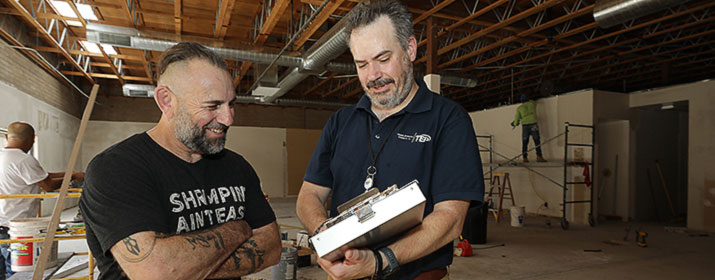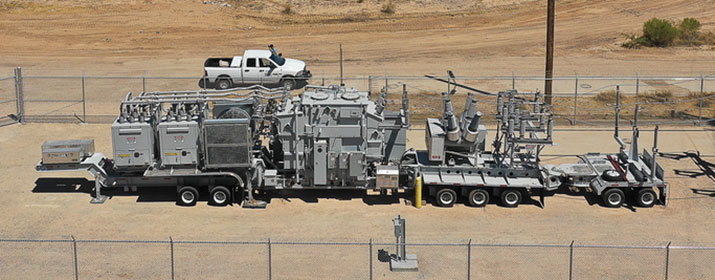
Tucson Electric Power employees are always looking for new technologies and processes that can help us serve our customers and communities more efficiently.
Here are three recent examples of how we embrace new processes and tools to provide exceptional service in extreme weather and adapt to customers’ evolving energy needs.
Adding to the Toolbox
A new tool called a Line Lifter is helping our crews restore power more quickly and safely when poles are damaged in storms.
Crew leaders saw the tool at a utility trade show earlier this year and shared it as a promising improvement to try out over the storm season. The Line Lifter uses an insulated arm that attaches to line or bucket trucks, enabling TEP crews to safely lift and hold energized wires during pole replacements or repairs.
Crews tested the Line Lifter during storm season and found it can significantly reduce restoration times and improve worker safety by eliminating the need to de-energize lines or work around damaged poles. Instead, with the primary wire securely lifted overhead, crews could easily remove damaged poles while waiting for new ones.
The overhead lift can shave hours off the restoration time because the line can remain operational while waiting for design, delivery and installation of the new pole.
“Our industry is evolving so we’re always looking for new and better ways to do things,” said Jeremy Fenn, T&D Line Construction Supervisor. “This gives us a tool in the toolbox that will get wire up and get roadways cleared more quickly.”
Guarding the Public
On a late July afternoon, a severe storm characterized in the local media as one of the strongest monsoon events in two decades left more than 70 damaged poles in its wake.
As our crews hustled to respond to 450 damage reports across the community, a team of dedicated employees stepped up to guard downed lines and broken poles to protect the public until repairs could be made.
Their work helped free up our first responders to focus on restoration efforts, helping us restore more connections faster in the heat of the summer.
Created in 2023, the line-watching team is comprised of about 40 employees from different departments who are trained to protect the public during outage emergencies.
Woodee Manuel, a Single Phase Metering Technician, was among the employees who provided support during that storm recovery. “My emergency outage role is small in comparison to the task others have, but my efforts allow others to be more efficient during chaotic times,” he said. “I love my community and I chose to help because it ultimately helps us restore power to our customers more quickly.”
Joshua Ramirez, a Tucson Power Production Training Specialist, agreed. “I feel a sense of pride knowing that we are helping our customers get their lights on a bit faster.”
Rightsizing Equipment
One key area of focus has been improving service reliability through more efficient planning and rightsizing of equipment.
TEP’s Design Services team recently began utilizing data from the company’s advanced metering system to calculate the appropriate transformer sizes for specific areas or customer types. Previously, teams had to physically visit neighborhoods to collect meter data, which could be a time-consuming process.
With the new Transformer Analysis Program, field technicians and designers can quickly access metering data to define transformer loads, ensuring the right equipment is installed to meet increased demand. This data-driven approach allows TEP to respond faster to power quality concerns and make more informed decisions about transformer replacements or upgrades.
“Customers’ loads vary and may not always follow typical models,” said David Wagner, Director of Line Construction and Metering. “This gives actual numbers that allows us to see what the actual peak load is in the summer, then we can decide if the transformer needs to be bigger, smaller, or is the right size.”






